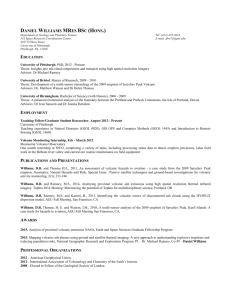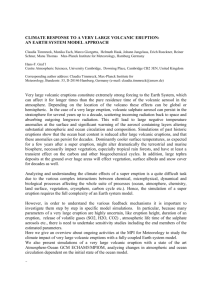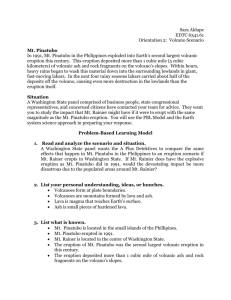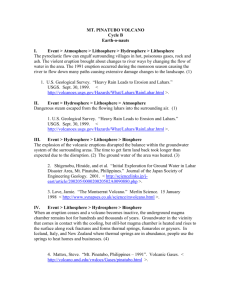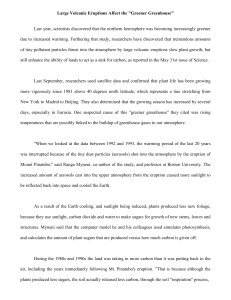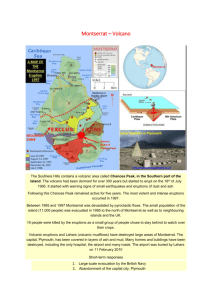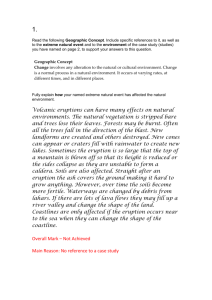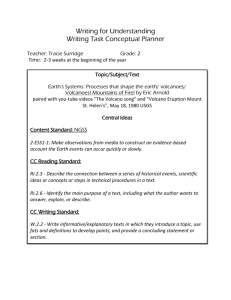File
advertisement
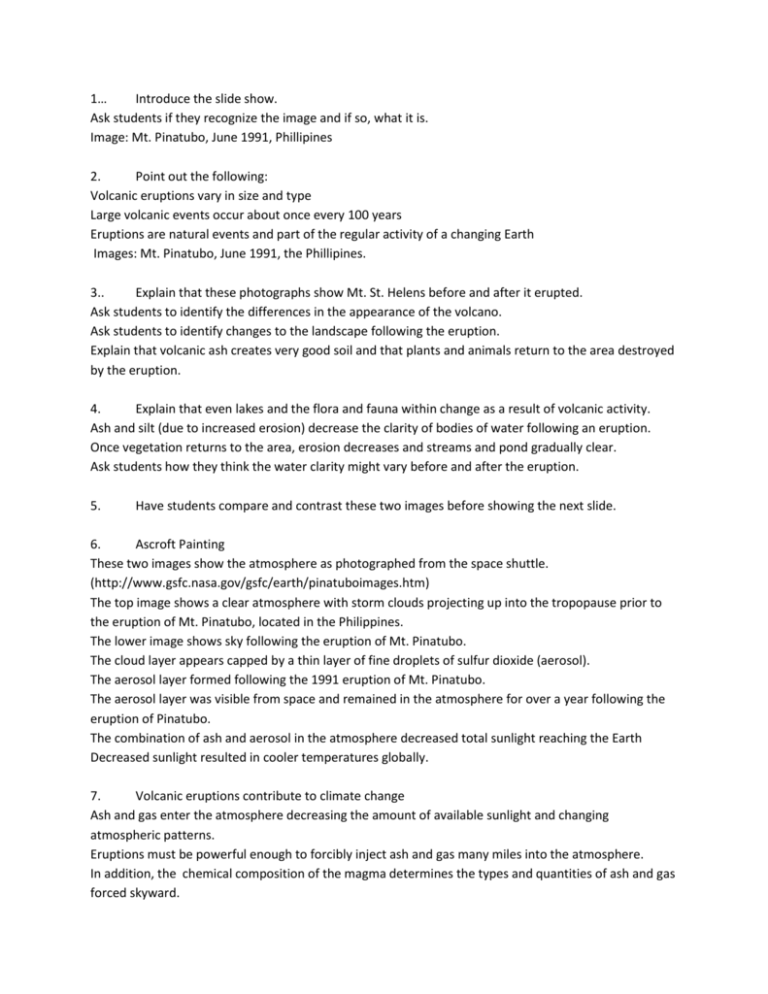
1… Introduce the slide show. Ask students if they recognize the image and if so, what it is. Image: Mt. Pinatubo, June 1991, Phillipines 2. Point out the following: Volcanic eruptions vary in size and type Large volcanic events occur about once every 100 years Eruptions are natural events and part of the regular activity of a changing Earth Images: Mt. Pinatubo, June 1991, the Phillipines. 3.. Explain that these photographs show Mt. St. Helens before and after it erupted. Ask students to identify the differences in the appearance of the volcano. Ask students to identify changes to the landscape following the eruption. Explain that volcanic ash creates very good soil and that plants and animals return to the area destroyed by the eruption. 4. Explain that even lakes and the flora and fauna within change as a result of volcanic activity. Ash and silt (due to increased erosion) decrease the clarity of bodies of water following an eruption. Once vegetation returns to the area, erosion decreases and streams and pond gradually clear. Ask students how they think the water clarity might vary before and after the eruption. 5. Have students compare and contrast these two images before showing the next slide. 6. Ascroft Painting These two images show the atmosphere as photographed from the space shuttle. (http://www.gsfc.nasa.gov/gsfc/earth/pinatuboimages.htm) The top image shows a clear atmosphere with storm clouds projecting up into the tropopause prior to the eruption of Mt. Pinatubo, located in the Philippines. The lower image shows sky following the eruption of Mt. Pinatubo. The cloud layer appears capped by a thin layer of fine droplets of sulfur dioxide (aerosol). The aerosol layer formed following the 1991 eruption of Mt. Pinatubo. The aerosol layer was visible from space and remained in the atmosphere for over a year following the eruption of Pinatubo. The combination of ash and aerosol in the atmosphere decreased total sunlight reaching the Earth Decreased sunlight resulted in cooler temperatures globally. 7. Volcanic eruptions contribute to climate change Ash and gas enter the atmosphere decreasing the amount of available sunlight and changing atmospheric patterns. Eruptions must be powerful enough to forcibly inject ash and gas many miles into the atmosphere. In addition, the chemical composition of the magma determines the types and quantities of ash and gas forced skyward. 8. The ash and gas spread outward from the eruption. Heavy particles land closest to the point of origin. Lighter materials and gases join air currents and are carried around the globe. Ask students to consider where one might look for the layers of ash distributed globally. Ask students if they could devise a way to capture ash particles following the eruption of a distant volcano. Ash settles around the globe following a volcanic eruption. In arctic and Antarctic regions, ash settling out of the atmosphere forms a layer that eventually is covered with snow and ice. Sandwiched between the ice, ash from ancient volcanic eruptions is preserved, providing a historical recorded of an event not witnessed by scientists. Today, scientists collect ice cores, long ice cylinders, and study the layers of material embedded within to identify the size, chemical composition, and origin of ancient volcanic eruptions. 9. The newly formed layer of ash and gas reflects energy from the Sun back into space. Only 0.1% of the total energy from the Sun is reflected but, this small amount is enough to decrease global temperatures. Remind students that the image is not to scale. 10… This diagram shows, in detail, the steps that lead to cooling of the Earth following a volcanic eruption. 11. This slide shows several images that record the unusual sunset colors that often follow large volcanic eruptions. The eruption of the Indonesian volcano Krakatau in 1883 created such brilliant and intense colors at sunset that fire fighters in cities around the United States set out in search of major fires west of their towns. The confusion caused by the spectacular sunsets caused people to think that just beyond the visible horizon was burning a large fire.

